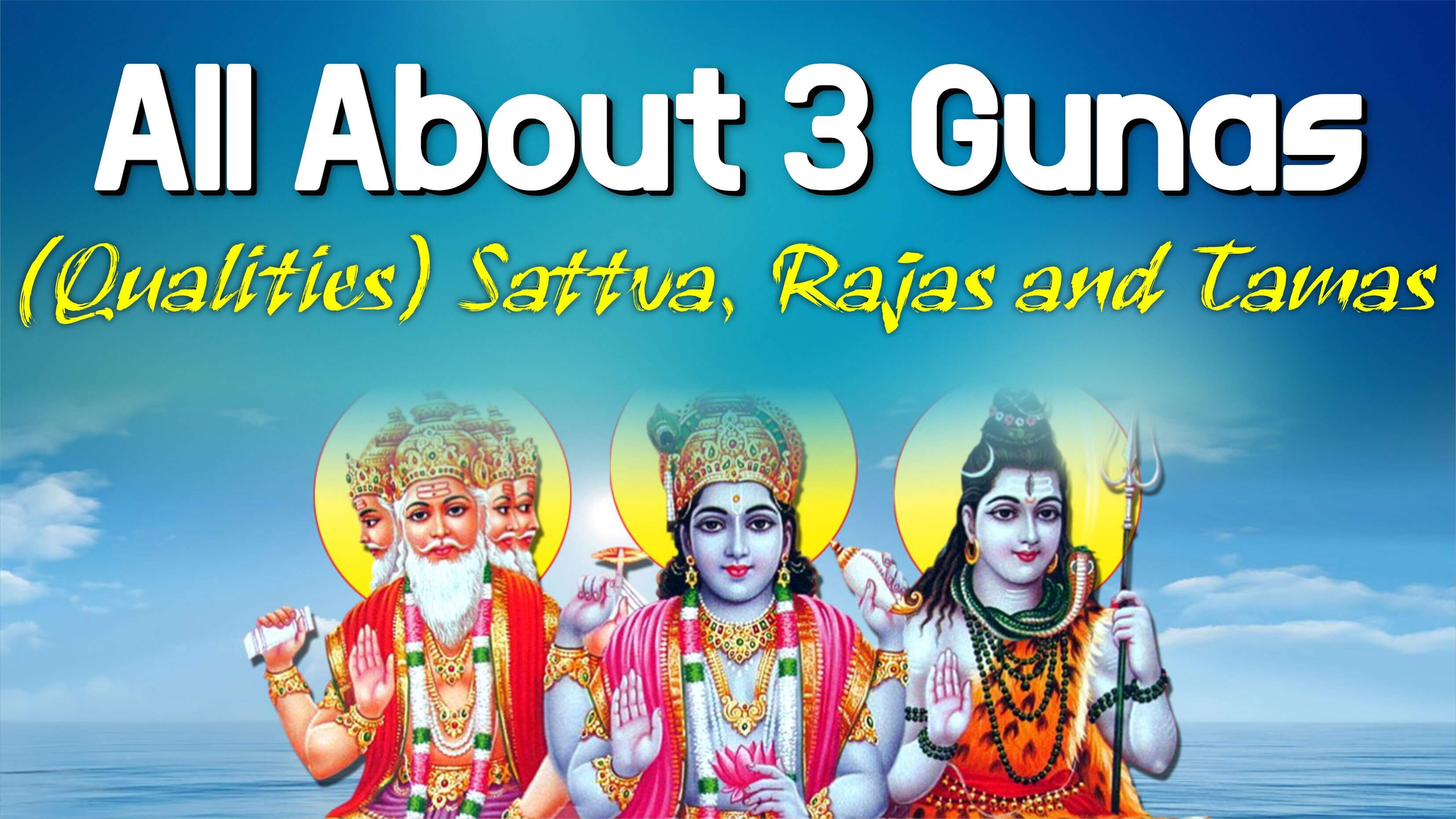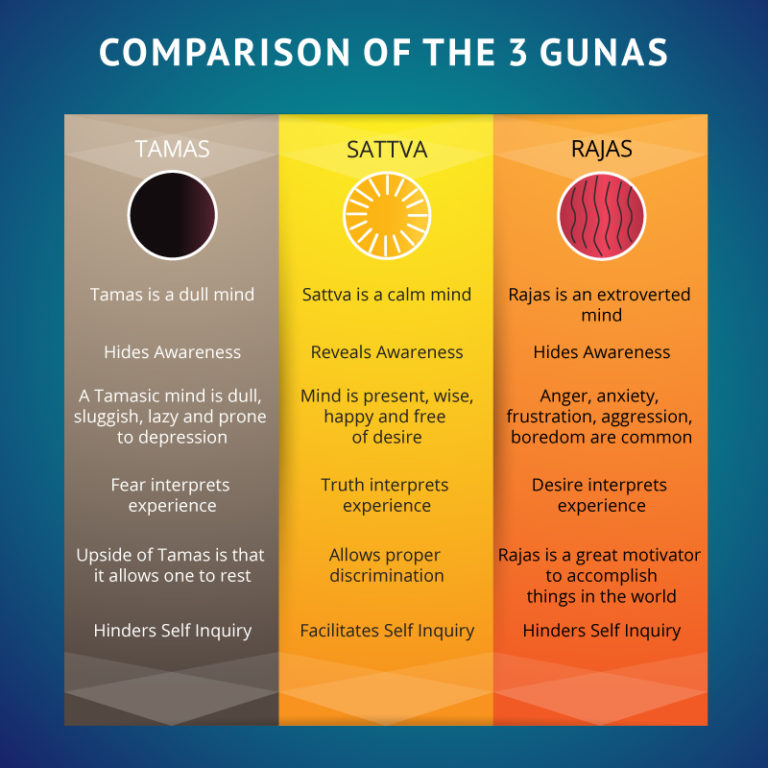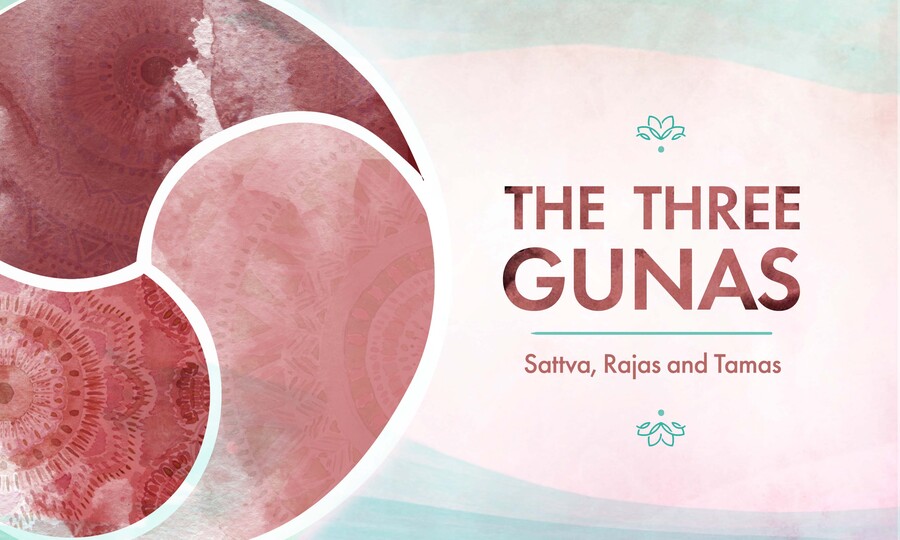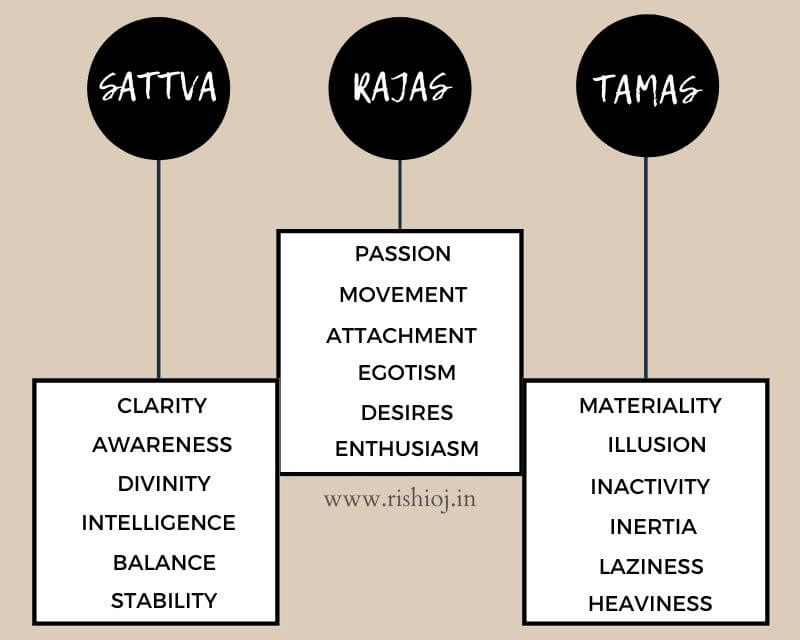
All About 3 Gunas (Qualities) Sattva, Rajas and Tamas Jagat Guru
Now, there is a broad understanding of what Sattva is, what Rajas is and what Tamas is. Sattva is the quality which is responsible for clarity, wisdom and righteous action.When Sattva is dominating in our environment, or in the body, that is when we feel light, happy, pleasant, joyful, alert, awake, and our perceptions are very clear.

Three Gunas Sattva, Rajas and Tamas Pravrajika Divyanandaprana
Sattva, Rajas & Tamas Explained Sattva. Sattva manifests itself as purity, knowledge, and harmony. It is the characteristic of goodness, joy, satisfaction, nobility, and contentment. The Sattva guna is free of fear, violence, wrath, and malice. We can think of it as the purest and most forgiving force within us.

THE 3 Gunas of Nature (SATTVA, RAJAS AND TAMAS) Heemang Parmar
These three words root in the sanskrit words sattva, tamas, and rajas which are used in various contexts. Let's go back to the basics: sattva, tamas, and rajas are the three main "gunas" or qualities that determine the nature of everything in the universe. Ayurvedic philosophy states that the gunas combine and interact to form everything.

Sattva, Rajas, Tamas, Role of 3 basic Gunas in Yoga
The three gunas: Tamas, Rajas, and Sattva. All three gunas are always present in all beings and objects surrounding us but vary in their relative amounts. We humans have the unique ability to consciously alter the levels of the gunas in our bodies and minds. The gunas cannot be separated or removed in oneself but can be consciously acted upon.

Understanding The Three Gunas Tamas, Rajas & Sattva
The Gunas—The Fundamental Qualities of Nature Guna means attribute, quality, strand. This word has many connotations, but the most common usage belongs to the vocabulary of the yoga and Samkhya traditions, where it refers to the well-known triad of forces— sattva, rajas, and tamas —that are thought to be the fundamental qualities of prakriti (Nature).

Sattva Rajas Tamas Gita's 10 Sattva Rajas Tamas Guna characteristics
For example, if you get upset because someone is rude to you at work, it may be that rajas is the dominant force. On the other hand, should you feel anxious in social situations, your tamas may have taken over. Fortunately, when you practice Kundalini Yoga, you can feel the joyous Sattva. Rajas. Rajas has a high-frequency and is all about movement.

Sattva Rajas Tamas by Vivek Wagle Book Review Books. Babies. And. More.
There are three gunas or qualities that affect your day-to-day life: sattva, rajas and tamas. Explaining how they affect the quality of our life, Gurudev Sri Sri Ravi Shankar says in Patanjali Yoga Sutras, "Three gunas come into our life in cycles. When sattva comes, there is balance, alertness, knowledge, interest, lightness and joy in.

Las gunas sattva, rajas y tamas
The gunas (Sanskrit for strands or qualities) are energetic forces that weave together to form the universe and everything in it. There are three gunas, each with its own unique attributes: tamas (stability), rajas (activity), and sattva (consciousness). It might help to think of gunas as tendencies: the habitual ways you respond to any.

Sattva, Rajas and Tamas The Importance of Three Gunas
Sattva Tamas Rajas. What Are the 3 Gunas? The word guna means quality, and it describes the different qualities or states of nature in yoga. Yoga philosophy categorizes these states of nature into 3 options: sattva, rajas, and tamas. Now three options may seem simple, but they can actually each be quite complex. See below for a brief summary of.

Sattva, Rajas, Tamas Three Gunas Ayurvedic Perspective
According to ancient Indian philosophy, everything in the universe is made up of three gunas: tamas, rajas, and sattva. These gunas determine our perception of reality, our behaviors, and our emotions. Understanding these three gunas is essential for anyone seeking mindfulness, inner peace, and enlightenment.
.jpg)
All About 3 Gunas (Qualities) Sattva, Rajas and Tamas Jagat Guru
Introduction: Trigunas are three basic mental attributes of a personality according to Indian Vedic literature that explains the relationship between mental attributes and human behavior. The three attributes are Tamas (tendency toward lethargy and rigidity), Rajas (tendency toward ambition and activity) and Sattva (tendency toward selfless service), respectively.

What is Sattva? How It Can Help You Improve Your Inner Life Mother Of
Here Is A Simple Explanation Of The Three Gunas: Sattva, Rajas, and Tamas: Sattva Guna Characteristics. Sattva is the quality of virtue, intelligence, and goodness and creates balance, harmony, and stability. One can cultivate sattva by making choices in life that foster unselfish joy and elevate awareness.

Alimentazione Sattvaenergia, Rajasdinamismo, Tamasinerzia
However, one virtue is always dominant than the other two. The 3 gunas are known as Tamas, Rajas and Sattva. The Tamas guna is usually associated with feeling like heaviness, inertia and lethargy. Rajas guna corresponds to feelings like excitement, activity, energy, mental agitation as well as restlessness. Sattva guna represents feelings such.

Sattva, Rajas et Tamas Les trois Gunas ou qualitées de la vie
Rajas balance Sattva and Tamas to create the motivation, creativity for inspiring change, movement, and right action. If Rajas Guna in a person got imbalanced, it has a converse effect whose predominance may hype Anger, Agitation, or Anxiety. There are some natural ways to reduce the excess of Rajas guna.

Os três poderes da natureza (tamas, rajas, sattva) na BhagavadGita
One way to do this is to eat a diet that is composed of diverse tastes and qualities. A method for achieving this is to align with a diet that has proper ratios among the macronutrients: carbohydrates (sattva), protein (rajas), and healthy fats (tamas). The ratios of these macronutrients are totally unique to the constitution of the individual.

Triguna Theory All about Sattva, Rajas and Tamas Guna
According to the philosophy of Yoga derived from Samkhya Yoga, Prakriti is said to be a composite of three prime qualities.They are the Sattva Guna, which represents light, bliss, and goodness; the Rajo or Rajas Guna which represents passion and motion; and Tamas Guna which represents darkness and inertia. Corresponding to these three Gunas of mind are three Vritti.